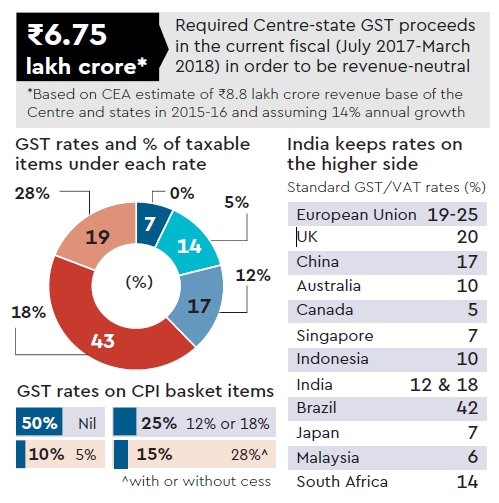 Small businesses with turnover of up to Rs. 75 lakh have time till July 21 to opt for composition scheme under the Goods and Services Tax regime, GST Network said.
Small businesses with turnover of up to Rs. 75 lakh have time till July 21 to opt for composition scheme under the Goods and Services Tax regime, GST Network said.
To opt for composition scheme, the taxpayer needs to log into his account at the GST Portal www.gst.gov.in and select ’Application to opt for the Composition Scheme’ under ’Services’ menu, a GSTN statement said.
“Any person who has been granted registration on a provisional basis and has turnover not exceeding Rs. 75 lakh, and who wishes to opt for the composition levy, is required to electronically file an intimation, duly signed or verified through EVC, at the GST portal on or before July 21, 2017,” GSTN Chairman Navin Kumar said.
Under composition scheme, traders, manufacturers and restaurants can pay tax at one per cent, two per cent and five per cent, respectively in the new indirect tax regime.
Businesses opting for composition scheme will see a lesser compliance burden as they will have to file returns only once in a quarter as against monthly returns to be filed by other businesses.
There are over 69 lakh excise, VAT and service taxpayers who have migrated to the GSTN portal for filing returns in the GST regime which ushered in on July 1.
Besides, there are over 4.5 lakh new taxpayers who have registered in the portal. These new registered taxpayers can opt for the composition scheme at the time of registration.
GSTN also clarified that taxpayers who have been given provisional IDs must complete all parts of the enrolment at the GST portal and submit the same along with the required documents with digital signature or EVC.
Once the form is completed and submitted, the enrolled taxpayer will be issued the final Certificate of Registration which would mark completion of migration under GST.
In case an enrolled taxpayer fails to submit the duly filled form with the requisite documents, his provisional registration is liable to be cancelled.
“A period of three months is allowed to complete the enrolment procedure by September 22, 2017. In the interim, they can issue tax invoice using the provisional ID already allotted to them,” Kumar said.



